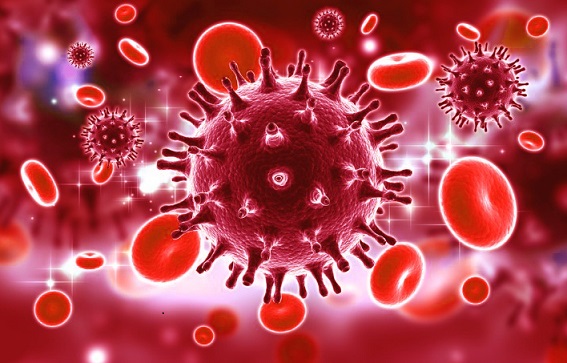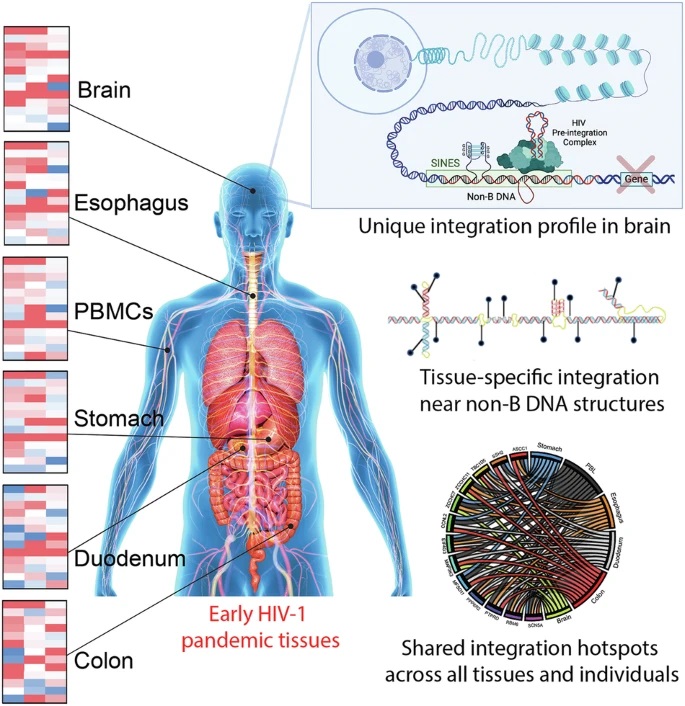Nikhil Prasad Fact checked by:Thailand Medical News Team Oct 07, 2025 2 months, 2 weeks, 3 days, 8 hours, 49 minutes ago
Medical News: Scientists Uncover How HIV Conceals Itself Within Human DNA
Researchers from Western University’s Schulich School of Medicine & Dentistry, the University of Calgary’s Cumming School of Medicine, the University of Alberta, and the Southern Alberta HIV Clinic have uncovered groundbreaking insights into how the HIV virus hides deep within the human body. By examining rare tissue samples from the early years of the HIV/AIDS pandemic, they discovered that HIV embeds itself into the DNA of human cells in unique patterns that differ between tissues such as the brain, blood, and digestive system.
 Canadian Scientists Discover Hidden Havens Where HIV Survives Inside the Body
Canadian Scientists Discover Hidden Havens Where HIV Survives Inside the Body
The study, led by Dr. Stephen Barr from Western University and Dr. Guido van Marle from the University of Calgary, shows that this “hiding strategy” explains why the virus can linger for decades even after treatment suppresses its activity. According to the researchers, understanding these unique DNA integration patterns could be the key to finding new treatment approaches aimed at truly eliminating the virus. In the midway of this paragraph, this
Medical News report highlights that this discovery represents one of the clearest views yet of HIV’s stealth mechanisms inside the human body.
Rare Samples Provide Unmatched Clues
The study used tissue samples collected from people infected with HIV during the early 1990s—before modern antiretroviral therapies existed. These preserved samples offered a rare opportunity to study how the virus behaved naturally across multiple organs within the same individuals. Researchers analyzed samples from the esophagus, stomach, small intestine, colon, blood, and brain, mapping how HIV’s genetic code integrated into the host’s DNA.
Dr. Barr explained that HIV does not insert itself randomly. Instead, in the brain, for example, the virus prefers to hide in quieter regions of DNA where gene activity is lower. This strategy helps it remain invisible to the immune system and medical treatments. Meanwhile, in the digestive system and blood, HIV integrates into more active DNA areas, allowing it to persist in different ways across organs.
 Regions in the human body where HIV 'hides'
The Brave Donors Behind the Discovery
Regions in the human body where HIV 'hides'
The Brave Donors Behind the Discovery
Dr. van Marle and his team paid tribute to those who donated tissue samples durin
g a time of fear, stigma, and limited treatment options. “Their courage to participate has enabled vital insights that are still saving lives today,” he said. These individuals unknowingly helped future generations of scientists unlock secrets of a virus that continues to infect over 38 million people globally.
New Hope for Targeted HIV Treatments
By mapping exactly where HIV integrates into DNA, the research opens the door to more effective strategies to eliminate it. Scientists believe that knowing each tissue’s “viral hiding place” could allow for therapies that specifically target or silence infected cells in those areas. This could represent a future step toward a functional cure—where HIV is permanently suppressed without lifelong medication.
The researchers noted that HIV’s survival is not random but deeply influenced by its local environment, such as immune responses and cellular activity. These insights may eventually lead to personalized treatments that address how HIV behaves differently in the brain, blood, and gut.
The study findings were published in the peer reviewed journal: Communications Medicine.
https://www.nature.com/articles/s43856-025-01146-5
For the latest HIV news, keep on logging to Thailand
Medical News.
Read Also:
https://www.thailandmedical.news/news/sars-cov-2-reactivates-latent-hiv-and-can-influence-hiv-disease-progression
https://www.thailandmedical.news/news/hiv-genomes-in-monocytes-a-new-target-for-hiv-eradication
https://www.thailandmedical.news/news/breaking-hiv-news-scientists-discover-that-the-phytochemical-hopeaphenol-inhibits-reactivation-of-hiv-viral-reservoirs
https://www.thailandmedical.news/articles/hiv-aids

